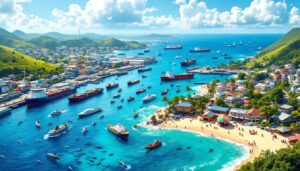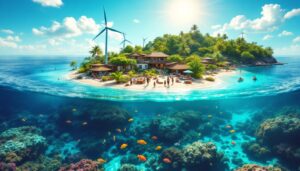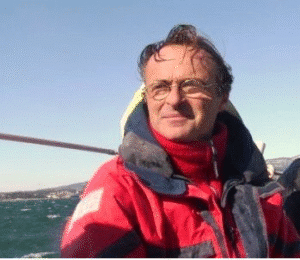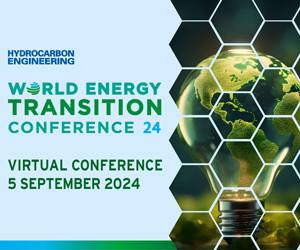At a time when oceans are increasingly under pressure, aquaculture partnerships emerge as essential levers to transform the future of sustainable fishing. By combining technological innovation, eco-responsible practices, and international collaborations, these partnerships shape a new paradigm for a sector in search of sustainability. Sustainable aquaculture, combining tradition and innovation, not only meets a growing food demand, but also allows us to take care of our marine resources. In this article, discover how new alliances are transforming this sector and exploring promising avenues for a greener aquatic future.
Table of Contents
ToggleTechnological advancements in the service of sustainable aquaculture
Technological progress plays a decisive role in the development of sustainable aquaculture. In 2025, innovations will drive aquaculture practices, contributing to reducing the ecological footprint of production activities while optimizing yields.
Aquaculture innovations are materialized by the integration of artificial intelligence (AI) and the Internet of Things (IoT) in the management of facilities. For example, smart sensors measure in real time water parameters such as temperature, salinity, and oxygen levels, allowing for instantaneous adjustments to breeding conditions.
Moreover, advances in biotechnology have developed sustainable and nutritionally optimized feeds made from plant proteins or even insects. These eco-designed feeds reduce dependence on marine resources, thus ensuring a more environmentally friendly production.
Another technological aspect is the adoption of multitrophic aquaculture techniques, where multiple aquatic species coexist in the same environment. This not only promotes effective resource use but also allows for eco-fishing, as the waste generated by one species is reused by others.
Innovations also extend to genetics, where breeding programs help develop strains resistant to diseases and adapted to various environments. This intelligent fishing optimizes production without compromising ecosystem health.
Finally, the digitalization of the sector facilitates traceability and transparency of seafood products throughout the supply chain. Applications allow consumers to track the journey of their products, thus strengthening trust and supporting blue brands that are committed to sustainability.
Each technological advancement promotes a proactive approach to sustainability, allowing stakeholders in aquaculture to meet ever-evolving regulatory demands while preserving the integrity of marine resources.
The importance of partnerships for sustainable fishing
The current dynamics of sustainable fishing rely on strong, diverse collaborations, uniting the efforts of various stakeholders to transform the sector. These sea partners include technology companies, NGOs, government institutions, and local communities.
Partnerships aim to share expertise, resources, and innovations. For example, collaborative structures bring together local fishermen and researchers to experiment with new non-invasive capture techniques.
International alliances, such as the European partnership for energy transition, are essential for harmonizing sustainability standards and practices across regions. These collaborations facilitate the exchange of data and technologies, thus maximizing the positive impact on the environment.
On a national level, the Future Aquaculture Plan in France perfectly embodies this collaborative approach. This plan brings together public and private stakeholders around concrete projects aimed at modernizing and optimizing aquaculture practices.
Another crucial aspect of partnerships lies in the commitment of research and education sectors. Universities and research centers innovate by collaborating with industry to develop sustainable solutions while training the next generation of professionals, rooted in values of sustainable sea.
In conclusion, partnerships represent a major driving force in transforming sustainable fishing. Together, these alliances enhance the sector’s adaptability to contemporary challenges while laying the foundations for a more responsible and harmonious aquatic future.
Challenges overcome through partnerships
- Reduction of environmental impact
- Improvement of ecosystem resilience
- Sharing of knowledge and technologies
Mariculture: a sustainable future for our oceans
Mariculture, or marine aquaculture, is distinguished by its potential for large-scale production while respecting ecosystems. It plays a crucial role in the transition to more sustainable practices.
The concept of sustainable mariculture is based on the idea of integrating marine farms into their natural environment while minimizing their negative impact. To achieve this, experts prioritize the farming of local species and the establishment of multitrophic aquaculture systems. These systems, designed to replicate natural food chains, optimize resource use and limit waste.
Initiatives such as algaculture, or seaweed farming, perfectly illustrate this logic. Seaweeds have a rapid growth capacity and offer notable environmental benefits, such as absorbing carbon dioxide and reducing ocean acidification. Furthermore, their use in the production of biomaterials opens new avenues for a blue circular economy.
Additionally, the development of specific technologies for mariculture, such as automatic monitoring systems and robust offshore platforms, allows for effective management of farms and reduces operational costs.
International cooperation is essential to promote mariculture. Pioneer countries like Norway and Japan are leading large-scale collaborative projects, providing a model to follow for other nations eager to develop their capabilities.
The growing recognition of the importance of mariculture is also leading to changes in public policies, strengthening regulatory frameworks in favor of responsible management of marine resources. Governments support projects that align with sustainability goals and encourage research and development in this field.
In summary, mariculture represents a key chapter in the book of global marine sustainability. It combines innovation with the reasonable exploitation of oceans, envisioning a future where abundance does not equate to overexploitation.
Engaging in this mariculture dynamic means embracing a vision where all maritime actors collaborate to enhance an untapped natural capital while ensuring long-term sustainable aquaculture.
Genetics: a subtle revolution in aquaculture
Genetics asserts itself as a strategic lever for the sustainability of global aquaculture. By modifying the characteristics of species, it allows for the improvement of their performance while respecting ecological balances.
One of the main objectives of applying genetics in aquaculture is to improve resilience to diseases. By selecting resistant strains, fish farmers limit the use of medications and reduce their dependence on antibiotics, which is essential for a bioaquaculture.
Active research in this area has led to the development of targeted breeding programs. The use of DNA sequencing and genetic markers allows for the identification of the most promising individuals for the future generation.
However, genetic manipulation must be balanced with ethical considerations and ecological concerns. Maintaining genetic diversity is crucial to preserving the adaptability of aquaculture populations and avoiding the detrimental consequences of monocultures.
Genetics also plays a key role in optimizing fish growth. It enables the production of species that reach commercial size more quickly, thereby reducing the time and resources needed for their breeding.
Initiatives supported by the international community, such as the Marine Biotechnology Laboratory, illustrate the significant investments made to combine science and practice.
Moreover, the transparency and genetic traceability of these fish, from birth to market, enhance consumer trust in a sector often subject to criticism.
Genetics, as a pillar of aquaculture innovation, helps reconcile economy and ecology. It is a vector for subtle and sustainable transformation of aquaculture practices, meeting the growing global food needs in an ethical and responsible manner.
Examples of promising genetic research
| Research | Objective | Expected impact |
|---|---|---|
| DNA sequencing | Identify beneficial traits | Optimization of production |
| Genetic markers | Monitoring lineages | Reduction of diseases |
| Targeted hybridization | Improve robustness | Increased resilience |
Combining tradition and innovation for a sustainable aquatic future
The alliance between tradition and innovation is the cornerstone of the future of sustainable aquaculture. Traditional practices, often based on centuries of experience, provide a solid foundation on which modern technologies can build.
In many regions, ancestral methods continue to thrive, adapting to technological advancements to offer harmonious long-term solutions. For example, traditional breeding techniques can be augmented by automated monitoring systems that ensure water quality and fish welfare.
The modernization projects pursued by many states illustrate the fusion between old know-how and new technologies. This ensures the preservation of ecosystems while strengthening local economies.
Aquaponics, which combines fish farming and plant production, is a telling example of this symbiosis. It allows for optimal resource use, minimizing waste and maximizing productivity.
The current climate challenges demand a redefinition of aquaculture practices. Thus, adapting traditional methods with more modern strategies proves vital for the sustainability of marine industries. In this regard, the Strengthening of sectors allows for effective adjustment to environmental changes.
In conclusion, embracing a hybrid model, combining innovation and tradition, seems to be the key to sustainable aquaculture in the modern era. Sector actors, by holding onto their roots while exploring new avenues, ensure not only the survival of cultural practices but also a prosperous and ecologically sound future for our oceans.







